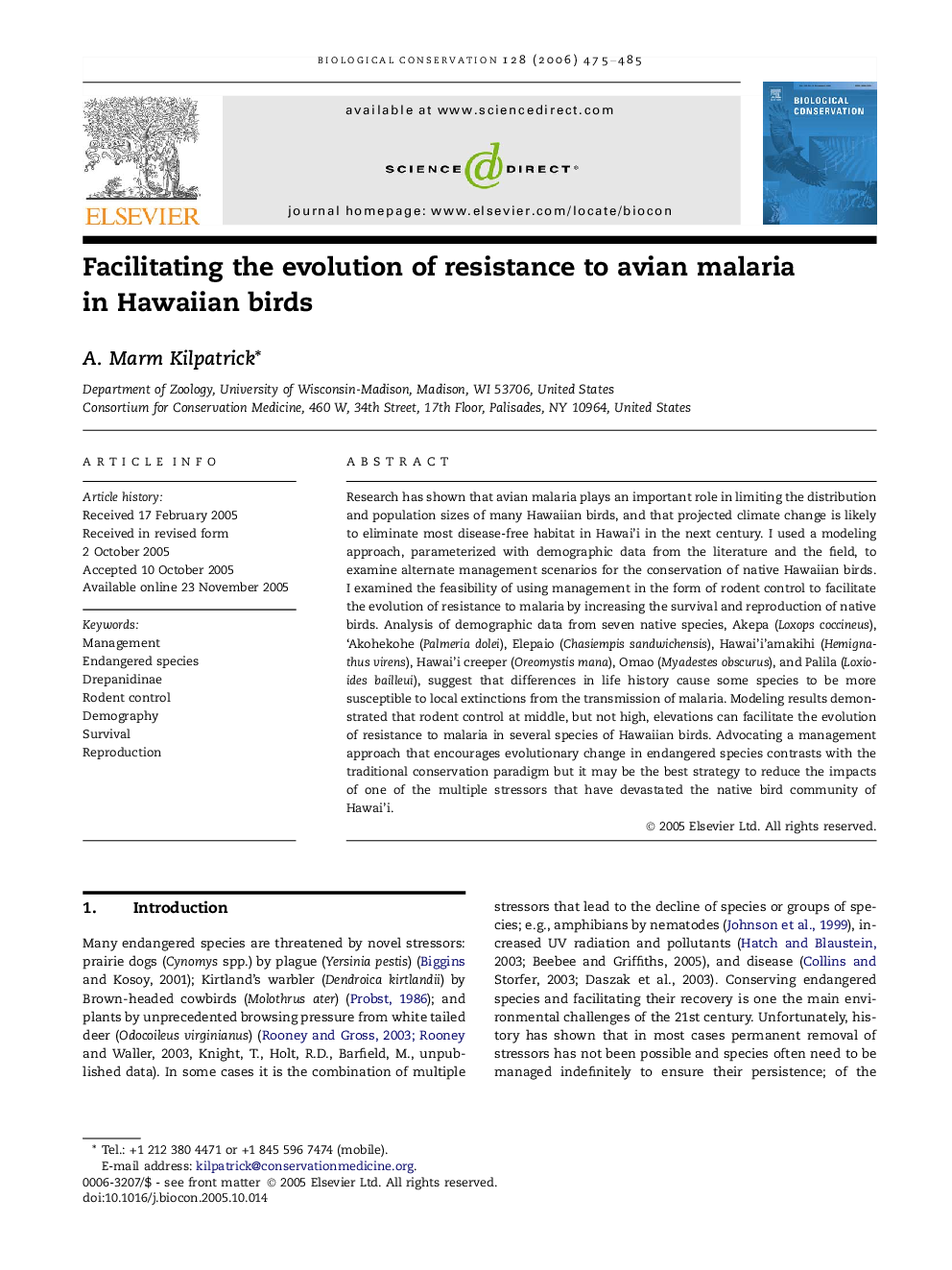| Article ID | Journal | Published Year | Pages | File Type |
|---|---|---|---|---|
| 4387810 | Biological Conservation | 2006 | 11 Pages |
Research has shown that avian malaria plays an important role in limiting the distribution and population sizes of many Hawaiian birds, and that projected climate change is likely to eliminate most disease-free habitat in Hawai’i in the next century. I used a modeling approach, parameterized with demographic data from the literature and the field, to examine alternate management scenarios for the conservation of native Hawaiian birds. I examined the feasibility of using management in the form of rodent control to facilitate the evolution of resistance to malaria by increasing the survival and reproduction of native birds. Analysis of demographic data from seven native species, Akepa (Loxops coccineus), ‘Akohekohe (Palmeria dolei), Elepaio (Chasiempis sandwichensis), Hawai’i’amakihi (Hemignathus virens), Hawai’i creeper (Oreomystis mana), Omao (Myadestes obscurus), and Palila (Loxioides bailleui), suggest that differences in life history cause some species to be more susceptible to local extinctions from the transmission of malaria. Modeling results demonstrated that rodent control at middle, but not high, elevations can facilitate the evolution of resistance to malaria in several species of Hawaiian birds. Advocating a management approach that encourages evolutionary change in endangered species contrasts with the traditional conservation paradigm but it may be the best strategy to reduce the impacts of one of the multiple stressors that have devastated the native bird community of Hawai’i.
